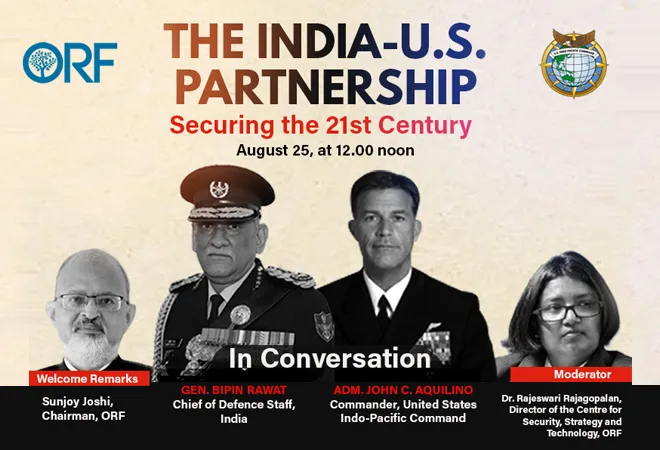
The rise of the US dollar (USD) continues unabated. As the Federal Reserve continues monetary tightening, global money markets are seeing a shortage of USD. Consequently
, most other currencies, not just Emerging Markets (EM) but also Developed Markets (DM), have sharply depreciated against USD in the last one year. While some DM currencies have bounced back in recent weeks, EM currencies remain under pressure. This isn’t of arcane financial market relevance. This isn’t a black (or even grey) swan either. In recent memory, the East Asian crisis in 1997, Global Financial Crisis (GFC) in 2008, Taper Tantrum in 2013, and COVID-19 in 2020 are instances when several countries faced rapid depreciation of their currencies against the USD.
No country is immune, including India. As a country that runs a structural Current Account Deficit (CAD), India has to be doubly careful. Memories of 1990-91, when the country had to pledge gold to raise foreign exchange, still linger. Alongside prudent policies, India has sought to immunise itself from such shocks by building foreign exchange reserves buffers during normal times. During periods of market volatility, it allows the Reserve Bank of India (RBI) to intervene directly in the markets, to reduce the volatility of the Indian Rupee (INR) depreciation. However, maintaining large foreign exchange reserves built through capital flows has a cost—the interest (or dividends) on those flows far exceed the interest that RBI receives by deploying the reserves in safe DM government bonds. This external account vulnerability imposes a state of permanent constraint on India’s flexibility of policymaking and reduces domestic growth.
Alongside prudent policies, India has sought to immunise itself from such shocks by building foreign exchange reserves buffers during normal times.
A permanent swap line with the US Federal Reserve will substantially mitigate the constraint and open significant policy flexibility.
Dollar Swap lines
This swap is an agreement between two central banks to exchange currencies to meet foreign exchange liquidity. If there was a swap line between the Federal Reserve and RBI, the latter, on demand, will place INR with Federal Reserve and get USD. RBI can then use the USD to supply to domestic foreign exchange markets – either to bridge a temporary gap in USD liquidity or cushion a sharp depreciation in INR by increasing USD supply. On maturity of the swap—ranges from a week to a few months – RBI will repay USD to Federal Reserve (and a pre-determined interest) while getting back INR. Both legs of the transaction are at the same exchange rate, i.e., neither RBI nor Federal Reserve bears exchange rate risks. This is akin to an overdraft facility that RBI has with the Federal Reserve to use during periods of USD shortage in India. As can be easily understood, this enables India to run a far more open trade and capital policy framework, reducing the level of foreign exchange reserves that are required to be held by RBI – both of which have longer-term beneficial impacts on growth and incomes.
This arrangement was initiated in 2008, during GFC, when the Federal Reserve established temporary swap lines with 14 central banks around the world. While that arrangement was terminated in 2010, a permanent (and unlimited) facility was set up in 2013 – with the central banks of Japan, the UK, Canada, Switzerland, and Europe (ECB).
Political signals embedded in the deal also enabled India’s entry into key groupings that manage global trade in military and hi-tech goods (MTCR, Australia Group, Wassenar).
It is obviously a “US ally” club, which is precisely why inclusion in the club will be a politico-strategic, rather than a techno-economic call. In 2013, India asked for and was denied this facility. Extending the Federal Reserve swap to India will be akin to the Indo-US 123 Agreement. Negotiated
between President George Bush and Prime Minister Manmohan Singh in 2005, the agreement carved out an exemption for India under NSG’s civil nuclear trade regime. Political signals embedded in the deal also enabled India’s entry into key groupings that manage global trade in military and hi-tech goods (MTCR, Australia Group, Wassenar).
Does the system work?
The UK’s recent experience is illustrative. Despite having a CAD that is higher than India’s and foreign exchange reserves at one-fifth of India’s levels, recent currency market volatility did not result in a loss of confidence and massive capital outflows. At least partially, this was a result of the cushion afforded by the Federal Reserve swap line.
The benefits that India will gain from such a swap arrangement are clear. With the US Federal Reserve serving as a lender of penultimate recourse, the country can afford to keep its long-term interest rates lower than what they are today – INR won’t need as big a “positive carry” against the USD to remain attractive for capital flows. It can also afford to have smaller foreign exchange reserves (as a percentage of trade/capital flows) than what is desirable today, thereby reducing the fiscal cost of those reserves. Policies can focus on maximising growth outcomes, including India’s perennially high import tariffs. It would also give greater confidence to sign FTAs, something that the country has been wary of for more than a decade now. In the longer term, greater internationalisation of INR can be hastened with USD on-demand back-stop in place.
Despite having a CAD that is higher than India’s and foreign exchange reserves at one-fifth of India’s levels, recent currency market volatility did not result in a loss of confidence and massive capital outflows.
For the US, it brings the world’s fifth largest economy more firmly in the “USD trading bloc” – a great strategic message in a post-Ukraine world scurrying to set up alternative global economic architectures to USD.
As Prime Minister Narendra Modi said, time to jettison another hesitation of history and negotiate strategic choices of benefit to India.
The author is the Managing Partner and CIO, ASK Wealth Advisors. The views and opinions expressed in this article are personal.
The views expressed above belong to the author(s). ORF research and analyses now available on Telegram! Click here to access our curated content — blogs, longforms and interviews.



 The rise of the US dollar (USD) continues unabated. As the Federal Reserve continues monetary tightening, global money markets are seeing a shortage of USD. Consequently
The rise of the US dollar (USD) continues unabated. As the Federal Reserve continues monetary tightening, global money markets are seeing a shortage of USD. Consequently PREV
PREV


